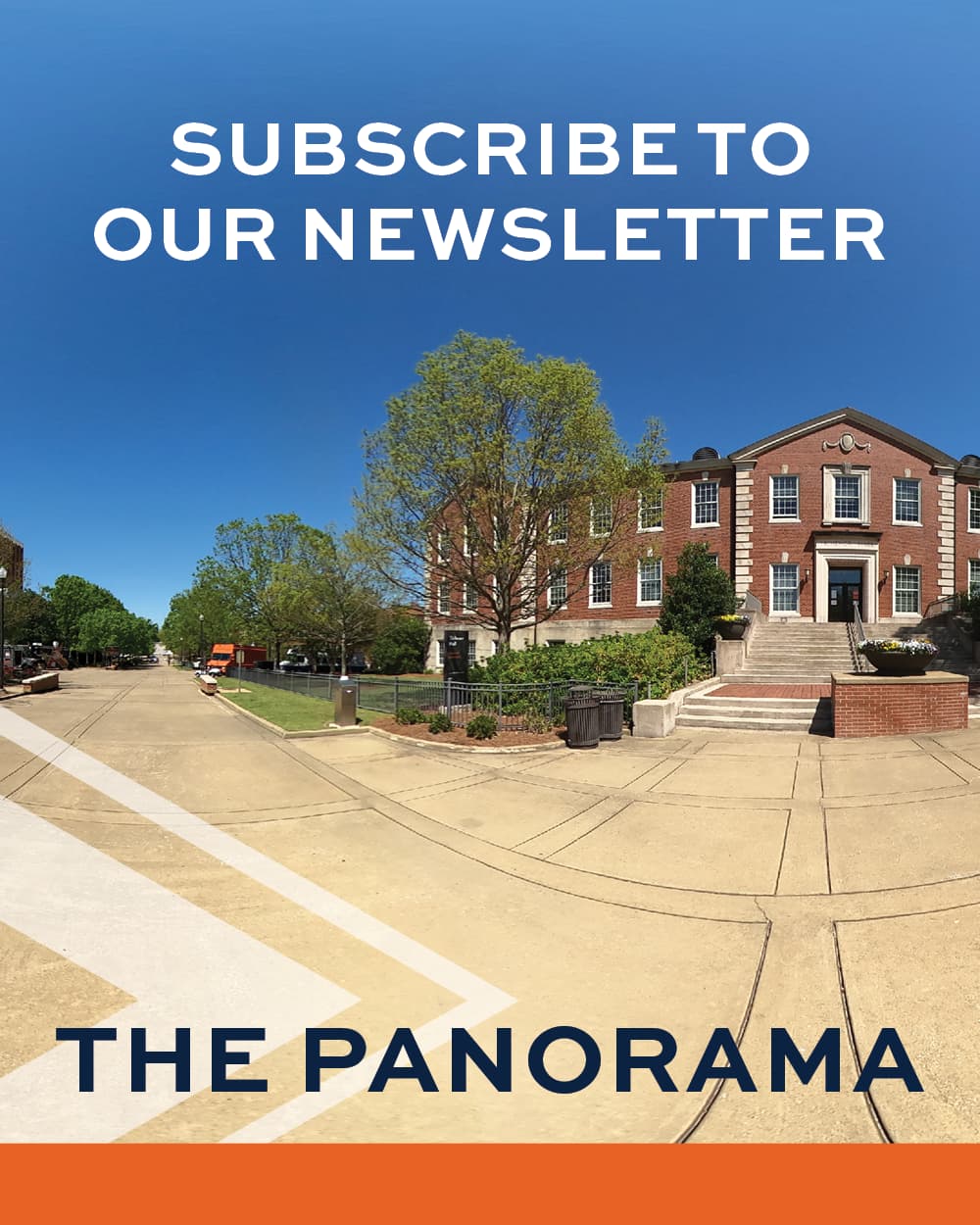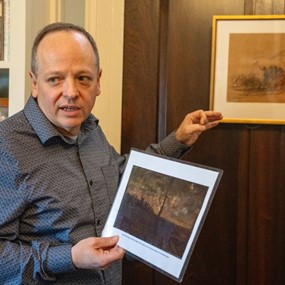Retelling Stone Mountain
Auburn history professor consults on ‘truth-telling’ museum redesign at Georgia monument
Georgia’s Stone Mountain Park is a popular family and field trip site for its sprawling hiking trails, picturesque camping sites and glittering lake.
However, those recreation activities all take place in the shadow of its main attraction and site of controversy – a solid granite carving of Confederate leaders Jefferson Davis, Robert E. Lee and Thomas J. “Stonewall” Jackson spanning three acres across the face of the mountain.
Amid calls to remove the carving, which is prohibited by Georgia law, the Stone Mountain Memorial Association (SMMA) will give a different part of the park a facelift: the museum that introduces visitors to the park.
“Stone Mountain Park has become a controversial place in the last few years,” said CEO Bill Stephens. “To take down the carving would take a small tactical nuclear weapon of some kind. So, you can’t take it away, but you can tell a story about it.”
The Discovering Stone Mountain Park Museum at Memorial Hall, located at the base of the mountain, hasn’t been renovated since 1995. With the help of Auburn University’s Draughon Associate Professor of Southern History Keith Hébert, the SMMA hopes to provide the full story of Stone Mountain through the new museum.
Hébert is a public historian who specializes in the history of “the Lost Cause” – a set of beliefs held by ex-Confederates and white Southerners about the meaning, causes and events of the Civil War. Hébert says the Lost Cause narrative falsely portrays slavery as benevolent and frames the conflict as a response to state’s rights.
Beyond his role as the project’s lead historian, Hébert is personally familiar with Stone Mountain. He grew up visiting Stone Mountain with his grandparents, spending many weekends at the park and watching the light show. He returns as a scholar and hopes the young people at the park now will leave better educated about how cultural landscapes shape how people view the world.
“The opportunity to now come back as an adult, as someone who’s studied these Lost Cause lies now for a couple decades,” Hébert said, “it’s a really amazing opportunity for me to try to tell a much fuller story, to try to place the monument in a much broader context and to be brutally honest about the origins of one of the most visited sites in the state of Georgia.”
No Civil War battles occurred at Stone Mountain, and the men on its face never visited the site. No major historical events were recorded at the mountain until the rebirth of the Ku Klux Klan at its summit in 1915. The carving on the mountain didn’t start until the 1920s, received funding in the middle of the Civil Rights Movement and wasn’t finished until the early 1970s, when Georgia fully desegregated schools.
Hébert said studying Stone Mountain’s history reveals a pattern. The carving on Stone Mountain was less about the Civil War itself, and more about sending a message in response to Black civil equity and voting rights.
“The best path forward, the most practical path forward, is to do everything in our power to make sure that when people come here, they get the full story,” Hébert said. “My job in the museum as a public historian is to really ensure that the new exhibit tells a very truthful, well-documented story of the Lost Cause and the story of this monument itself that isn’t afraid to sort of delve into what might traditionally in the South be seen as controversial or untouchable sort of subjects.”
Warner Museums, an agency based in Birmingham, Alabama, will design nine new exhibits with input from historians and the community. The agency’s portfolio includes the National Medal of Honor Heritage Center, the Negro Southern League Museum, the 16th Street Baptist Church, the Alabama Wildlife NaturePlex, and more.
Proposed exhibits for the museum focus on the power of collective memory, history leading to the Civil War, how Confederate soldiers were commemorated, the African American experience, Shermantown, Stone Mountain and the Civil Rights Movement and the bas-relief art, or stone carving, on the mountain. The new Discovering Stone Mountain Park Museum at Memorial Hall is expected to open in 2025.
Stephens and the rest of the SMMA are most excited about the last exhibit, which will focus on how to move forward together.
“We want people to reconcile differences when they come here,” Stephens said. “We all grew up having different memories instilled in us about the Civil War and the South. We need to talk about those, how memory forms character and how those memories need to be discussed so that we can reconcile with one another.”
The SMMA will host public hearings while the building is being renovated to gather feedback from the community. The goal is to bring Georgians to the table, make sure their voices are heard and provide space to contribute ideas.
That feedback will inform the new exhibit designs to reflect a more modern Georgia, including immersive and digital experiences for visitors, which Stephens said will build on the educational value of the museum.
“We’re all about addition and not subtraction,” Stephens said. “The monuments are going to stay here, but we’re going to tell a complete story about them. Hopefully, that will lead to people understanding more about their own history, the history of this mountain and this park, the South in general and the history of the country.”
While Stone Mountain is unique in size and scale, what it represents is not uncommon. Hébert said Stone Mountain is poised to introduce a wave of critical discussion and community engagement across the South.
“One of the goals of this project is to transform Stone Mountain Park into a site in which communities can come learn more about the actual history and the actual context of a monument like this,” Hébert said. “In many ways, Stone Mountain is an ideal place to have those conversations, because if Stone Mountain turns the corner and tells the full story and isn’t afraid to show the blemishes of that, I think that’s a very solid step forward to creating new conversations in our country.”
Learn more about the Department of History in the College of Liberal Arts.







